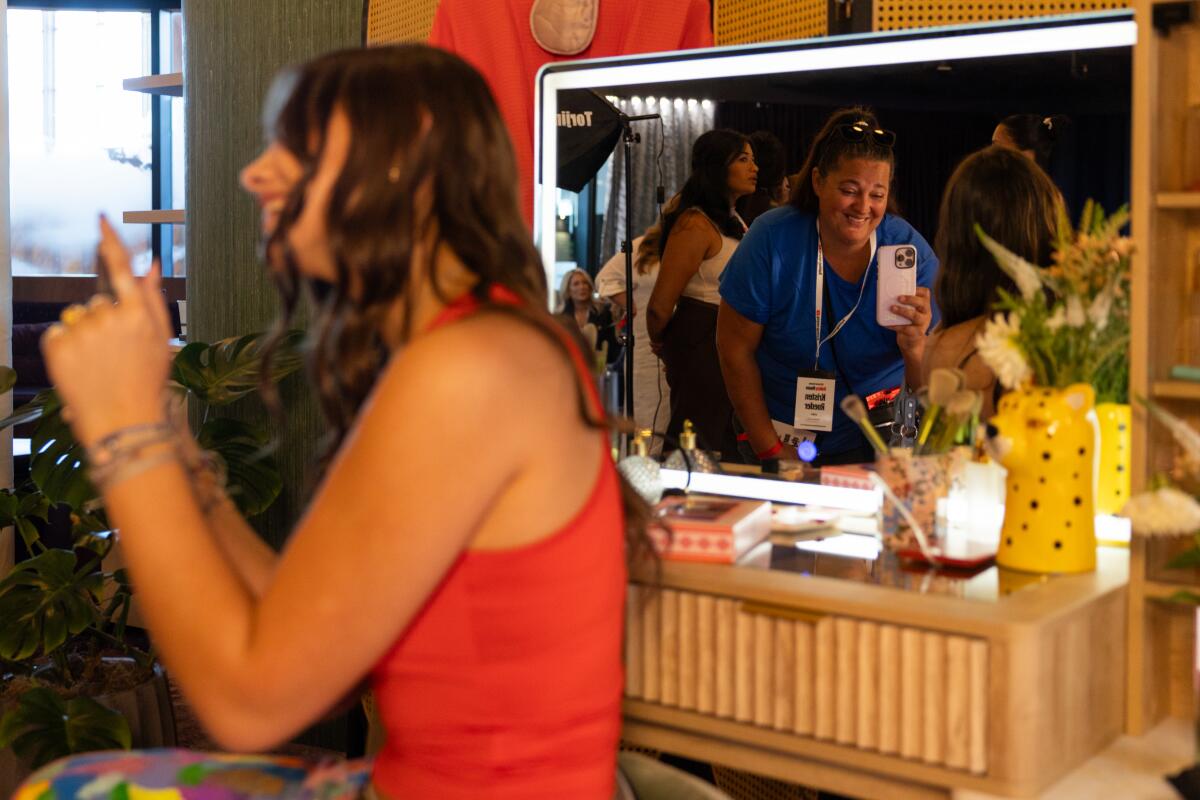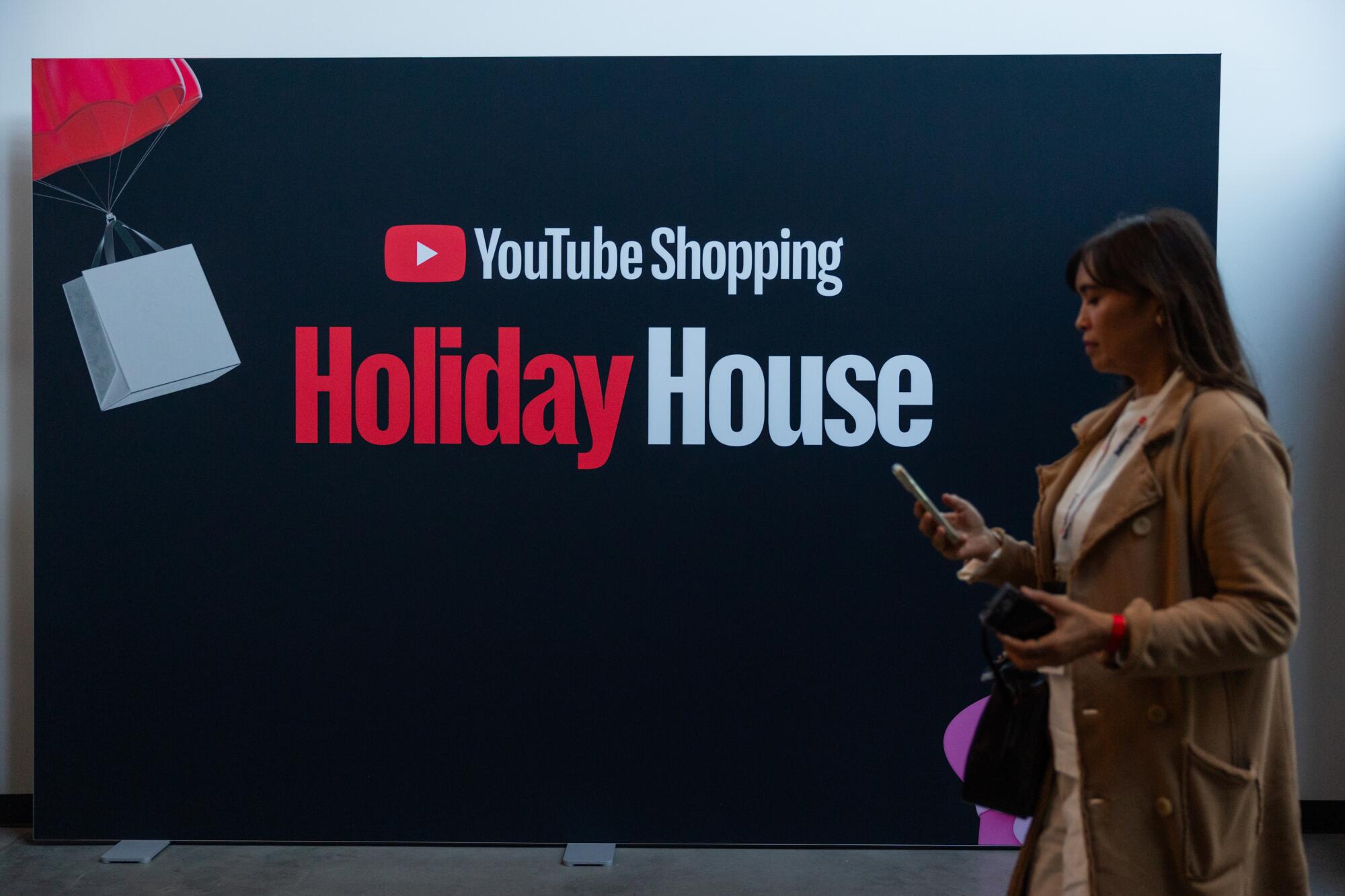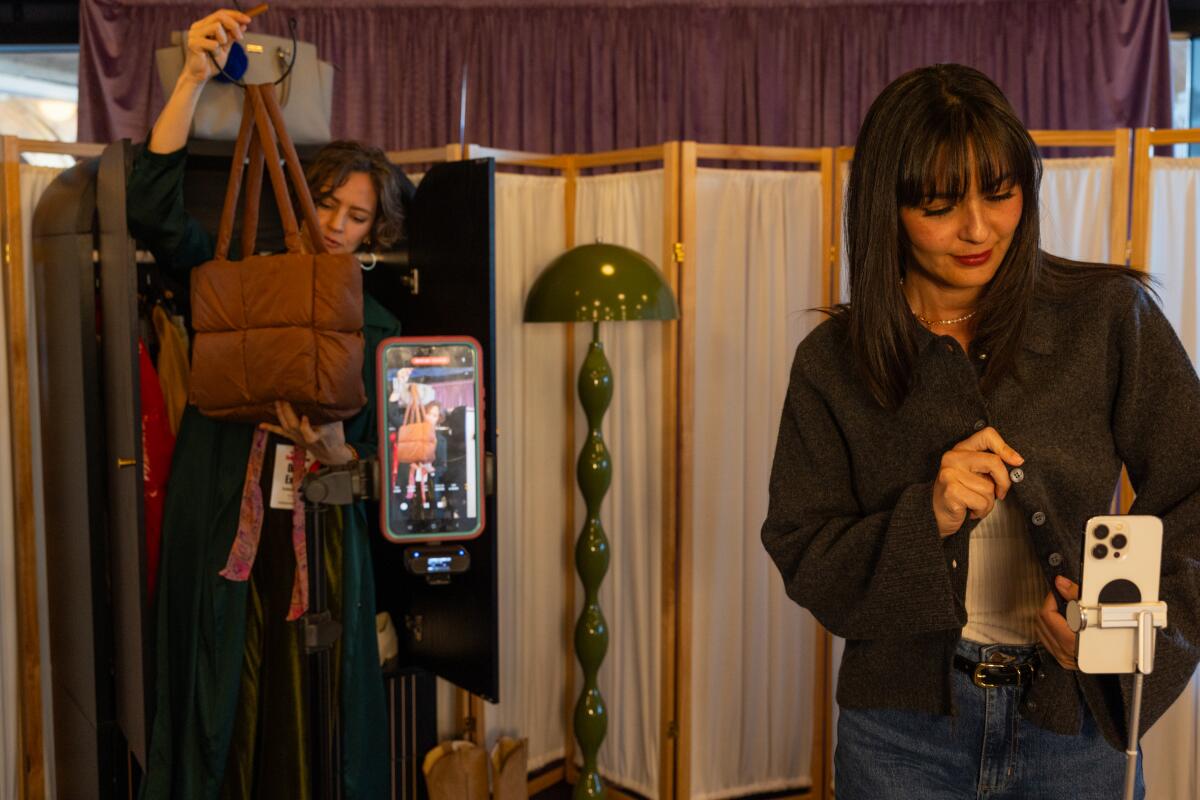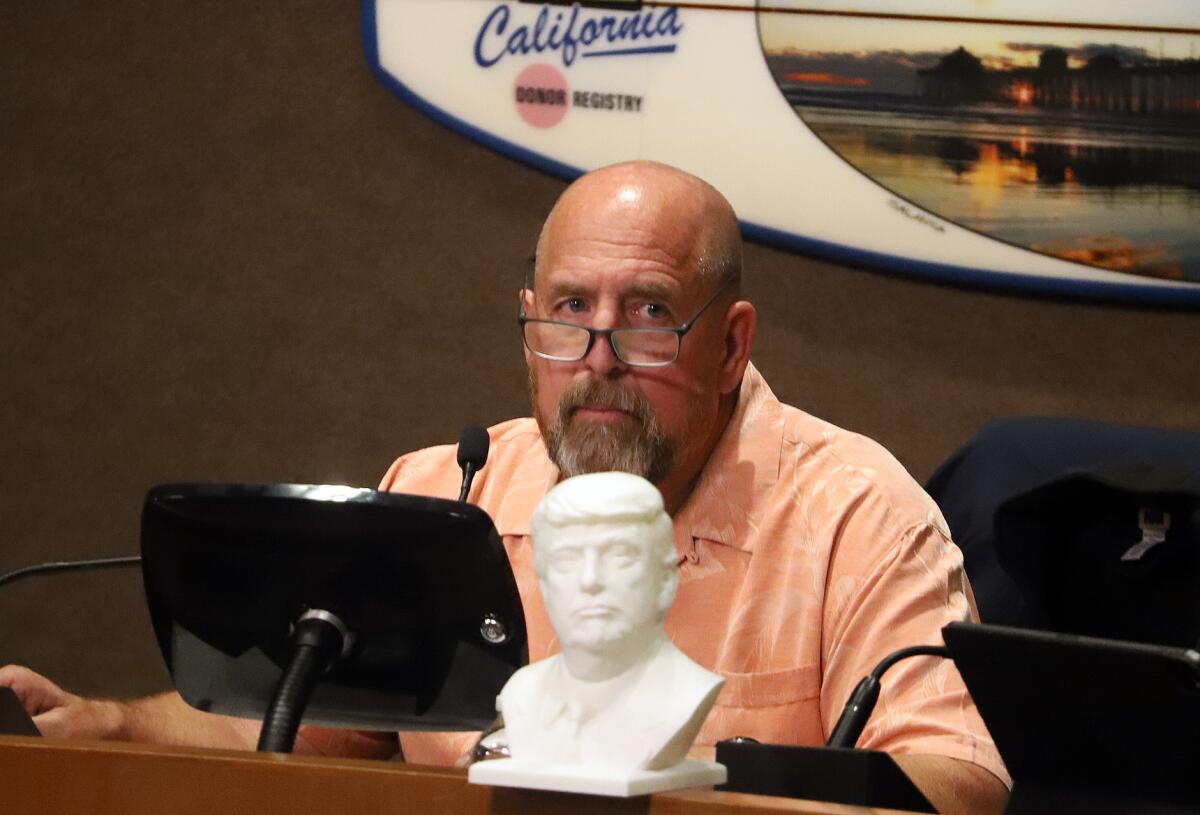YouTube creators gather in Playa Vista to mingle with leading brands
Inside a historic aircraft hangar in Playa Vista, crowds of people gathered on Thursday to browse the latest fashions from handbags to clothing and shoes as they prepared for the holiday shopping season.
These weren’t shoppers or retailer buyers browsing for the latest products. Instead, they were YouTube video creators who were being courted by brands from Lowe’s to Shark Beauty to encourage online audiences to buy their products.
Aaron Ramirez, a 22-year-old influencer who focuses on men’s fashion and lifestyle, stood in front of racks of carefully curated shelves of backpacks as he decided which items he would endorse for his 234,000 YouTube subscribers.
“I can make a video about anything that improves my quality of life and add a link to it,” said Ramirez. “I only recommend products that I really use and really like.”
The San Diego resident was among about 300 creators participating in YouTube’s annual benefit for creators dubbed “Holiday House” that helps internet personalities get ready to sell goods during the busy holiday shopping season.
The event — held at the cavernous converted Google offices that once housed Howard Hughes’ famous Spruce Goose plane — underscores YouTube’s desire to be a bigger player in online shopping by leveraging its relationship with creators to promote products in much the same way that rival TikTok does.
In August, YouTube introduced new tools to help its creators better promote products they plug in their videos. One feature uses AI to identify the optimal place on the screen to put a shopping link when an influencer mentions a product. If a customer clicks on that link and makes a purchase, the creator gets a commission.
Brands that were once skeptical about influencers have embraced them over time as sales-tracking tools have improved and the fan base of video creators has mushroomed.
“It’s like the people that you saw on television and before that the people that you listened to on radio who became the trusted personalities in your life,” Earnest Pettie, a trends insight lead at YouTube, said in an interview. “Oprah’s Favorite Things was a phenomenon because of how trusted Oprah was, so it really is that same phenomenon, just diffused across the creator ecosystem.”
Despite economic uncertainty and tariffs imposed by the Trump administration, shoppers in the U.S. are expected to spend $253.4 billion online this holiday season, up 5.3% from a year ago, according to data firm Adobe Analytics.
Social media platforms have helped drive some of that growth. The market share of online revenue in purchases guided by social media affiliates and partners, including influencers, is expected to grow 14%, according to Adobe Analytics.
Cost-conscious consumers are doing more research on how they spend their money, including watching influencer recommendations. In fact, nearly 60% of 14- to 24-year-olds who go online say their personal style have been influenced by content they’ve seen on the internet, according to YouTube.
“It’s more about discovery, understanding where the best deals are, where the best options are,” said Vivek Pandya, director at Adobe Digital Insights. “Many of these users are getting that guidance from their influencers.”
YouTube is one of the top streaming platforms, harnessing 13.1% of viewing time in August on U.S. TV sets, more than rivals Netflix and Amazon Prime Video, according to Nielsen. And shopping-related videos are especially popular among its viewers, with more than 35 billion hours watched each year, according to YouTube.
With YouTube’s shopping feature, viewers can see products, add them to a cart and make purchases directly from the video they’re watching.
Promoting and enabling one-click e-commerce from video has been huge in China, triggering a wave across Asia and the world of livestreaming and recorded shopping videos. Live commerce, also known as live shopping or livestreaming e-commerce, is a potent mix of streaming, chatting and shopping.
The temptation to shop is turbocharged with algorithms like that of TikTok Shop, enticing people to try more channels and products.


1. YouTube content creators Diana Extein, left, and Candice Waltrip, right, film clothing try-ons during YouTube’s Holiday House shopping event at Google Spruce Goose on Thursday, Oct. 16, 2025 in Playa Vista, CA. 2. YouTube content creator Peja Anne, 15, makes a video with beauty products as her mom Kristin Roeder films during YouTube’s Holiday House shopping event at Google Spruce Goose on Thursday, Oct. 16, 2025 in Playa Vista, CA.

A YouTube content creator who declined to give her name browses YouTube’s Holiday House shopping event at Google Spruce Goose on Thursday in Playa Vista, Calif.

YouTube content creator Cheraye Lewis’ channel focuses on lifestyle and fragrance, and a brand deal with Fenty Beauty helped launch her content to larger audiences.
More than 500,000 video creators as of July have signed up to be a part of YouTube Shopping, the company said.
Creators who promote products can make money through ads and brand deals, as well as commissions.
YouTube already shares advertising and subscription revenue with its creators and currently does not take a cut from its shopping tools, said Travis Katz, YouTube Shopping vice president.
“For us, it’s really about connecting the dots,” Katz said. “At YouTube we are first and foremost very focused on, how do we make sure that our creators are successful? This gives a new way for creators to monetize.”
Companies like Austin-based BK Beauty, which was founded by YouTube creator Lisa J, said YouTubers have helped drive sales for their products.
“They’ve built these long-term audiences,” said Sophia Monetti, BK Beauty’s senior manager of social commerce and influencer marketing. “A lot of these creators have established channels. They’ve been around for a decade and have just a really engaged community.”
To be sure, YouTube faces a formidable rival in TikTok, which is a leader in the live shopping space (its parent company, Byte Dance, is being sold to an American investor group so that the hugely popular app can keep operating in the U.S.).
Two years ago, the social video company launched TikTok Shop, working with creators and brands on live shopping shows that encourage viewers to buy products. TikTok had 8 million hours of live shopping sessions in 2024.
YouTube says its size and technology create advantages, along with the loyalty its creators build with fans when it comes to product recommendations.
Bridget Dolan, a director of YouTube Shopping Partnerships, said “shopping has been in YouTube’s DNA from Day One” and that the company has been integrating shopping features into its viewing experience.

YouTube content creators peruse products and film content during YouTube’s Holiday House shopping event at Google Spruce Goose on Thursday in Playa Vista, Calif.
Santa Clarita-based YouTube creator Cheraye Lewis said that YouTube Shopping helped her gain traction and earn a trusting audience through quality recommendations. Lewis, who has 109,000 subscribers on YouTube, makes videos about items such as fragrances and skincare products.
Lewis has been a video creator for eight years and has worked with such companies as Rihanna’s beauty brand Fenty.
“I try to inspire women and men to feel bold and confident through the fragrances that they’re wearing,” Lewis said at the event Thursday. “I give my audience real talk, real authenticity.”

